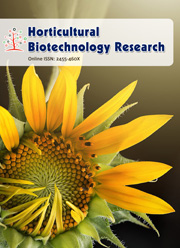Effect of light, explant maturity and antioxidant on in vitro organogenesis and plant regeneration of the medicinal plant Capraria biflora L.
Keywords:
Micropropagation, Capraria biflora, in vitro regenerationAbstract
The main goals of this research were analyzed how the presence of light, the leaf maturity and the presence of antioxidants affect the in vitro organogenesis and regeneration of Capraria biflora. Leaves segments with approximately 1 cm² were inoculated on MS medium with 30 g L -1 sucrose 100 mg L -1 myo-inositol 7.71 mM of indoleacetic acid (AIA) and 4.6 mM of kinetin (KIN). Three experiments were performed (1- Light effect, 2 – Leaves maturity effect and 3 – Antioxidant effect). In all experiments, each treatment had 30 replicates. In general, light and leaf maturity seams be less important factors affecting C. biflora regeneration. It seems that development stage of the leaves can interfere on callus in vitro development. In the other hand, the presence of light not only reduces the callus formation but also interfered on responsive callus formation. The explant oxidative response is probable influenced by the presence of light, but cannot only be attributed to this factor. The oxidation control, made using medium supplemented whit activated charcoal, seams be the principal factors that influence plant regeneration from leaves explants. Organogenesis of vegetative shoots occurred in all leafs cultured in media supplemented with activated charcoal. Calluses were produced in all conditions tested. However, the presence of activated charcoal and light presented an inhibition effect on callus formation. Shoots were isolated and rooted in medium without growth regulators and developed into whole plants.



 .
.